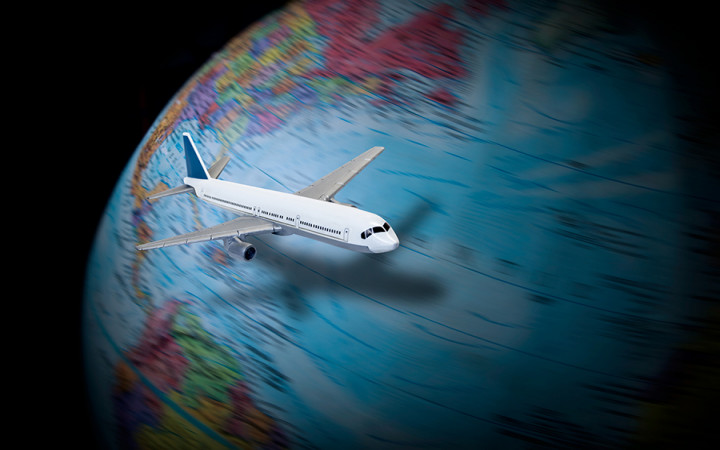A heartbreaking incident has unfolded in Santee, San Diego, where a baby girl lost her life after being left in the back of a hot car. This tragic event occurred just two months after her adoptive parents brought her home. Is hot car death common?
Discovery and Emergency Response Into The Hot Car Death – An Ongoing Investigation
Diana Sofia Aleman Roman, the infant victim, was found unresponsive in the SUV parked outside her family’s home around 12:20 AM on June 13. The child had been left in the vehicle for several hours in 63°F weather before a family member discovered her and immediately called 911.
Despite being rushed to Sharp Grossmont Hospital, Diana could not be saved. The San Diego County Sheriff’s Office is actively investigating the circumstances that led to Diana being forgotten in the car and determining who was responsible. As of now, no charges have been filed.
The Dangers of Hot Cars – a Tragic Hot Car Death
Studies highlight the rapid rise in temperature inside a parked car. On a 70°F day, the temperature inside a car can soar to 104°F within just half an hour. Reaching 115°F in an hour. The human body’s organs begin to shut down at 107°F, making such environments lethal, especially for children.
Adoption and Family Background – A Loving Family
Diana was welcomed into the home of Romer and Jayson De Los Santos on April 11, after they traveled to Arizona to meet her in the hospital. Heartwarming photos captured the couple cradling Diana and introducing her to their two-year-old son, who was also adopted. Romer expressed his grief after the hot car death, writing, “I haven’t slept in days,” next to one of the photos.
The De Los Santos family had been actively seeking to adopt a second child, sharing their adoption profile on social media in November. They expressed their desire to provide a loving home filled with cherished memories. Special moments such as beach outings, biking to the park, and raising foster kittens. Romer, a senior consultant at Jama Software, and Jayson, a stay-at-home dad, have been together for over 20 years. They married in 2008 during a brief period when same-sex marriage was legal in California. Their home is described as a “zoo,” housing numerous pets including cats, dogs, chickens, and parakeets.
Community Reaction

Neighbors described the De Los Santos family as kind and attentive parents often seen playing outside with their children. One neighbor said, “They seem like a nice family who wanted to give a couple of kids a good life. It’s just a shame it didn’t turn out that way.” It seems many suggested that the hot car death wasn’t intentional.
Medical Examination and Broader Context

The San Diego County Medical Examiner’s Office will determine the cause and manner of Diana’s death. Annually, around 37 children die from being left in hot cars across the U.S. Since 1998, California has witnessed at least 56 such fatalities, according to statistics from San Jose State University’s No Heat Stroke project.
Preventive Measures and Legal Implications & Expert Insights
Parents are urged never to leave their children alone in vehicles, even for short periods. Temperatures can rise dangerously fast, posing severe risks to children who cannot regulate their body temperatures as efficiently as adults. Which can effectively cause hot car death. California law imposes a $100 fine for leaving a child under six in a car under hazardous conditions. With potential charges ranging from neglect to manslaughter depending on the outcome.
Experts explain that it’s possible for any parent to forget a child in a car, especially when distracted or following routine habits. The increase in such cases since the 1990s is partly attributed to the recommendation of placing child car seats in the back, out of sight to protect them from airbags.
Recommendations for Prevention
To avoid such tragedies, No Heat Stroke suggests placing a soft toy in the front seat as a reminder of the child in the back or placing essential items next to the child’s seat. They also recommend keeping vehicles locked at all times and teaching children never to play in cars.
The loss of Diana Sofia Aleman Roman serves as a stark reminder of the dangers associated with leaving children unattended in vehicles and the importance of vigilant parenting practices. Hot-car tragedies can happen to anyone due to human memory lapses.
Here are key strategies to prevent these incidents:
Create Safeguards: Establish agreements with child-care providers to notify each other if a child is absent or late. Set phone reminders to ensure the child has been dropped off.
Secure Vehicles: Always keep vehicles locked and keys out of children’s reach.
Visual Reminders: Place the child’s items, such as a diaper bag or jacket, in the front seat as a reminder.
Back-Seat Checks: Keep essential items like your backpack or briefcase in the back seat to prompt a check before leaving the car.
Never Leave Children Unattended: Never leave a child alone in a vehicle, regardless of the outside temperature.
Technological Solutions & Expert Advice:
Invest in car seats or vehicles with integrated reminder technology, such as SensorSafe. Systems that default to “on” are most effective. Use education and technology together to prevent these tragedies. Real-life experiences, like that of Jennifer Stockburger, highlight the importance of these precautions. Combining awareness with practical strategies and technology can protect children from hot-car incidents.
Why don’t airplanes fly in a straight line to save fuel?
Have you ever looked at a flight path on a map and wondered why airplanes take curved routes instead of flying in a straight line? Wouldn’t flying in a direct line be more fuel-efficient and faster? At first glance, it seems logical that a shorter distance would result in less fuel consumption, but in reality, aviation is far more complex.
Several factors determine flight paths, including the Earth’s shape, jet streams, weather conditions, and air traffic regulations. Let’s break down why airplanes rarely fly in a straight line and how their curved paths actually make flights more efficient.
The Earth’s Shape and the Great Circle Route

One of the biggest reasons airplanes don’t fly in a straight line is the Earth’s curvature. While we often view flight maps as flat, the Earth is a sphere, and the shortest path between two points is actually an arc called the Great Circle Route.
If you take a globe and use a string to connect two distant locations, you’ll notice that the shortest route often curves rather than follows a straight path. This is why flights from New York to Tokyo pass over the Arctic region rather than flying directly west across the Pacific Ocean.
Using the Great Circle Route helps planes save both time and fuel, even though it appears curved on a flat map.
Jet Streams and Weather Conditions Impact Flight Paths
Another key factor affecting airplane routes is jet streams—high-altitude wind currents that move at speeds of up to 200 mph (320 km/h). Pilots strategically plan routes to take advantage of these strong winds when possible.
Video : Why Airplanes Don’t Fly Straight
Flying with jet streams allows an airplane to get an extra push, helping it move faster while burning less fuel. Flying against a jet stream can slow down the plane significantly, increasing fuel consumption. Pilots often adjust routes to avoid strong headwinds, even if it means flying a longer distance.
Additionally, storms, turbulence, and severe weather conditions also play a role in determining flight paths. Airplanes may adjust mid-flight to bypass dangerous weather zones, thunderstorms, or areas with extreme turbulence.
Air Traffic Control and Flight Regulations
Air traffic isn’t a free-for-all where planes can just fly wherever they want. There are strict regulations set by aviation authorities and air traffic control (ATC) that dictate flight routes.
Some of these rules include restricted airspace, where certain areas, such as military zones, national security locations, and political zones, prohibit commercial flights from entering. Predefined flight corridors exist to avoid mid-air collisions, ensuring flights follow established air traffic lanes. Major airports handle hundreds of flights daily, so ATC ensures safe and efficient arrivals and departures.
Due to these regulations, airplanes cannot always take the most direct path and must follow designated routes instead.
Avoiding Air Turbulence for Passenger Comfort
Turbulence can make a flight uncomfortable, and pilots actively adjust routes to minimize rough air conditions. There are different types of turbulence, including thermal turbulence caused by warm air rising from the ground. Flying at higher altitudes helps avoid this.

Mechanical turbulence happens near mountains and rough terrains where wind patterns shift unpredictably. Clear-Air Turbulence (CAT) is sudden, strong air currents in high altitudes that are difficult to predict.
To ensure a smoother ride for passengers, pilots may deviate from the shortest path to avoid these turbulent areas.
Why Do Airplanes Sometimes Ascend Before Landing?
If you’ve ever been on a flight where the plane suddenly climbs just before landing, you might have felt a bit concerned. This maneuver is known as a go-around and is actually a common and safe aviation practice.
Some reasons why pilots perform a go-around include runway clearance issues. If another plane hasn’t cleared the runway in time, pilots must abort the landing and circle back. Poor weather conditions, such as poor visibility, strong crosswinds, or sudden gusts, can make a landing unsafe. If a plane is too fast, too high, or not properly aligned with the runway, the pilot will ascend and try again for a safer landing.
Go-arounds are standard procedures in aviation and ensure passenger safety above all else.
The World’s Longest Non-Stop Flight
While most flights follow curved paths, some routes push the limits of non-stop travel. The longest direct commercial flight in the world is from Singapore to Newark, New Jersey, USA.
This flight covers a distance of 10,400 miles (16,700 km) and takes approximately 18 hours and 45 minutes. It follows a carefully optimized path to balance fuel efficiency, wind conditions, and passenger comfort.
Video : Does Earth’s Rotation affect the Airplanes Speed & Flight Time
What Happens If a Plane Suddenly Loses Cabin Pressure?
A sudden drop in cabin pressure is often portrayed as a dramatic event in movies, but in reality, pilots are well-trained to handle it calmly.
When this happens, oxygen masks automatically deploy, and passengers should put them on immediately and breathe normally. The plane will descend to a safe altitude where oxygen levels are sufficient for breathing. The flight crew will assess the situation and communicate with passengers.
Losing cabin pressure doesn’t mean the plane will crash—pilots follow strict safety protocols to handle such incidents efficiently.
Final Thoughts: Why Curved Flight Paths Are More Efficient
While it may seem counterintuitive, airplanes take curved routes instead of straight lines to optimize flight efficiency, fuel usage, and passenger safety. Factors such as the Earth’s shape, jet streams, air traffic control, and weather conditions all play a crucial role in determining flight paths.
So next time you’re on a plane and see the route map displaying a curved flight path, remember there’s a lot of science and planning behind it to ensure you reach your destination as safely and efficiently as possible.



Leave a Reply